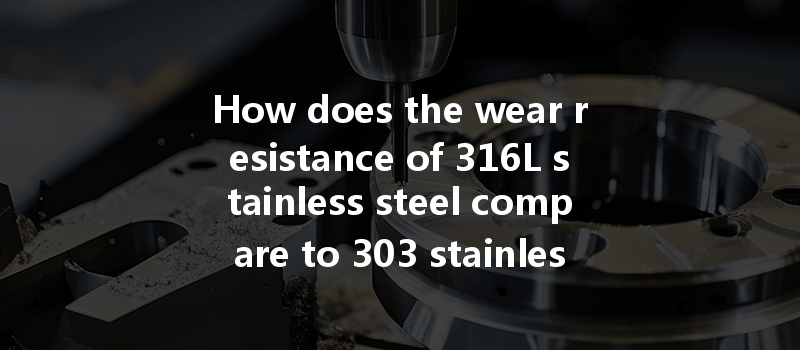Did you know that stainless steel is not just one type of alloy, but a family of over 150 different grades? Among these, 316L and 303 stainless steels are particularly popular in CNC machining processes. The choice between them can significantly impact a project’s performance, longevity, and overall cost. This blog will explore the intricate world of stainless steel, focusing on how the wear resistance of 316L and 303 stainless steel affects their machining suitability and application in various industries. Let’s dive into this essential comparison to gain a comprehensive understanding of which material may be the best fit for your specific machining needs.
Understanding Stainless Steel
What is Stainless Steel?
Stainless steel is defined as a steel alloy that contains a minimum of 10.5% chromium, which provides anti-corrosive properties. The unique combination of elements in stainless steel, such as nickel, molybdenum, and carbon, improves its resistance to rust, corrosion, and heat. This versatility makes it a favorite in various industries, including automotive, aerospace, food processing, and medical.
Types of Stainless Steel
Stainless steel can be broadly categorized into different types, such as:
The two grades we will focus on, 316L and 303, primarily belong to the austenitic family but differ significantly in their compositions and properties.
Detailed Analysis: 316L vs. 303 Stainless Steel
Composition of 316L Stainless Steel
316L stainless steel includes molybdenum, which enhances its corrosion resistance, particularly against chlorides and other aggressive environments. The “L” designation indicates a low carbon content (≤0.03%), minimizing the risk of carbide precipitation during welding, making it suitable for projects requiring a welded finish.
Composition of 303 Stainless Steel
303 stainless steel contains additional sulfur that enhances its machinability, making it an ideal choice for manufacturing precision parts where ease of machining is critical. However, this extra sulfur can reduce its corrosion resistance compared to 316L.
Wear Resistance Comparison
Wear resistance is a critical factor in determining the longevity and reliability of materials used in manufacturing. When comparing 316L and 303 stainless steels, several aspects must be considered:
Influence of Material Composition

Performance in Machining Operations
machining operations place mechanical stress on materials, and wear resistance is paramount in this context.
Applications and Industries
Applications of 316L Stainless Steel
Industries that utilize 316L stainless steel include:
Applications of 303 Stainless Steel
303 stainless steel finds its place in various industries, such as:
Choosing the Right Material
The choice between 316L and 303 stainless steel should be informed by a combination of factors:
: The Importance of Material Selection in CNC Machining
In conclusion, the comparison between 316L and 303 stainless steel plays a pivotal role in CNC machining. While 316L excels in wear resistance and corrosion properties—making it a choice for projects with high-stress environments—303 offers unparalleled machinability that is ideal for precision machining.
Understanding these materials’ core characteristics enables manufacturing professionals to select the best material for their unique project requirements. As industries prioritize durability, reliability, and performance, the discussion around material selection becomes more critical and warrants thoughtful consideration.
As you plan your next project, remember the significance of choosing the right stainless steel grade. The difference can mean improved product longevity and reduced operational costs. This exploration of 316L and 303 stainless steels showcases the importance of wear resistance in material selection, a factor that continues to be invaluable as technology and production methods evolve.
Why This Blog Matters
The implications of mismatched material selection can lead to increased wear, propensity for failure, and ultimately significant costs for businesses. By investing time in research and understanding material properties, CNC machining practices become more efficient, effective, and economically viable.
With this detailed analysis at your fingertips, you’re now better equipped to make informed decisions regarding the choice of materials. Remember, in the realm of manufacturing, knowledge is power, and the right information can optimize your operations tenfold.






